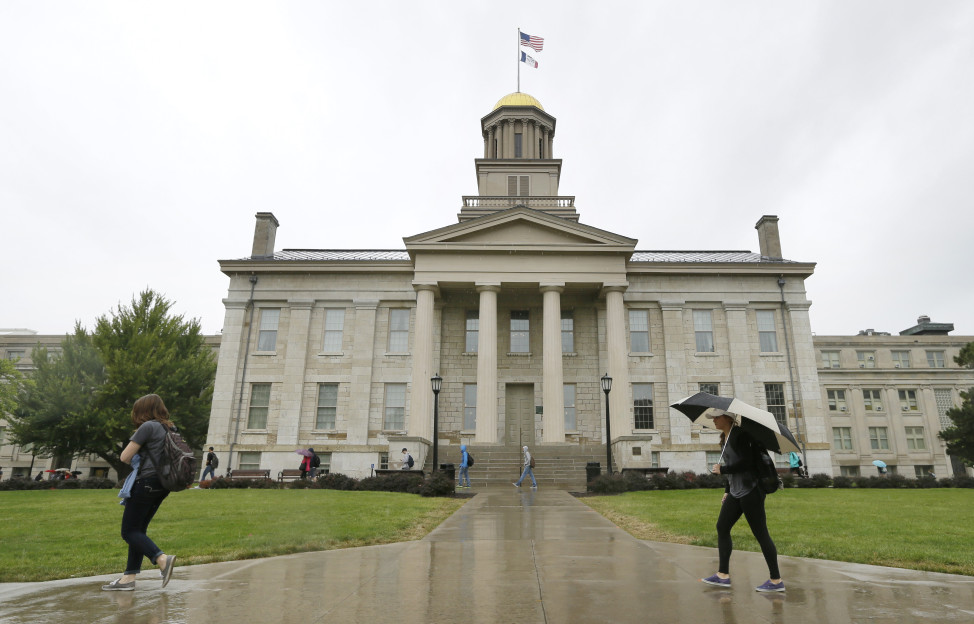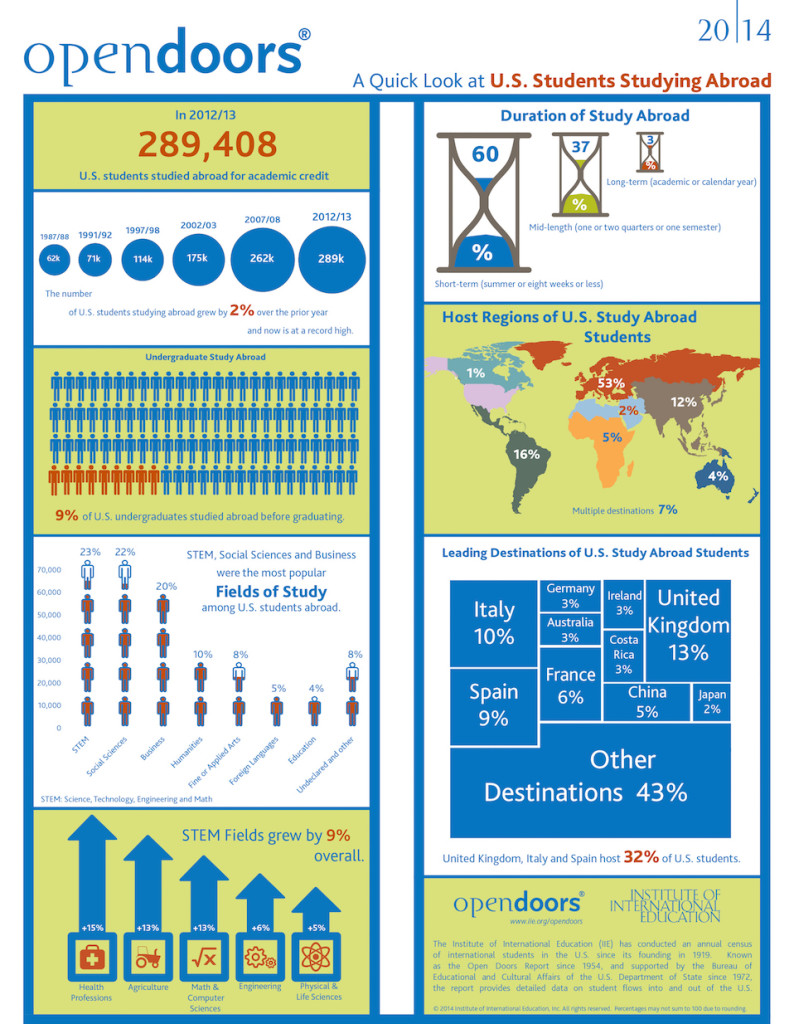
In this Oct. 2, 2014 file photo, students walk across campus at the University of Iowa in Iowa City, Iowa. (AP Photo)
For millions of students around the world, it’s the highlight of their college career: the opportunity to leave their campus for a semester to travel overseas and study abroad.
However, fewer than 10 percent of American students take advantage of the chance to study in a foreign country. And that’s a concern, according to the Institute of International Education (IIE), which asserts that international experience is a key component of a 21st century education, since globalization demands a U.S. workforce with knowledge of other countries, cultures and languages other than English.
A new IIE report outlines the stark contrasts between students coming to and students going from the United States.
The IIE and Department of State recently released Open Doors 2014, an annual report that looks at the numbers behind the millions of students around the world who leave their home country to study in a foreign country.
This past school year, more students – both American and foreign – participated in a study abroad program than ever before. During the 2013/2014 school year, 886,052 international students came to the United States as part of a study abroad program, while nearly 290,000 U.S. students traveled overseas for school.
But American students lag behind their foreign counterparts: students are coming to the U.S. to study at a faster rate than American students are traveling internationally for their studies.
“If this rate of growth were to continue, it would on average take up 25 years to double the number of Americans studying abroad,” said Rajika Bhandari, deputy vice president for Research and Evaluation at IIE. “We can do better than that.”

(File) Chinese students wait outside the U.S. Embassy for their visa application interviews in Beijing, China. (AP Photo)
Another difference: where students are traveling for study abroad. More international students come to the U.S. to study than anywhere else in the world.
For the fifth year in a row, China tops the list, sending more students to the U.S. than any other country during the 2013/2014 school year.
But the majority of U.S. students don’t head to China, or even Asia: over half of U.S. students studying abroad head to Europe, followed by Latin America and the Caribbean at 15.7 percent, and Asia at 12.4 percent.
Of the top five countries where U.S. students do their study abroad, Europe takes the top four, with nearly 40 percent of U.S. students going to the United Kingdom, Italy, France, or Spain. China is number five on the list, attracting just five percent of US students studying abroad.
This focus on Europe is likely tied to American culture. Many people in the United States are of European ancestry, and studying abroad in Europe may be a way to reconnect with their roots. The United Kingdom, which tops the list of U.S. study abroad destinations, is the “mother country” from which the United States declared independence in the Revolutionary War.
The low number of U.S. students studying abroad, and the lack of diversity in where they go, may be the reasons why IIE recently launched Generation Study Abroad.
The campaign, which is supported by nearly 300 colleges and universities, and over a dozen U.S. and foreign government agencies, seeks to double the number of U.S. study abroad participants by 2020.
Evan M. Ryan, assistant secretary of state for Educational and Cultural Affairs (ECA), is a proponent of such efforts and says the State Department is launching “a new office that looks at institutional capacity for Americans to study abroad.”
“By encouraging international students to enrich our campuses and by stimulating American students to study abroad, we educate the next generation of world leaders, share global perspectives to live and learn together and promote economic strength and security by ensuring young people can get jobs in the global economy of the future,” Ryan said.
She feels the percentage of U.S. students studying abroad is low and would like to grow that number.
If other countries are any indication, such efforts could indeed have a huge impact. The three countries with the largest growth in students coming to the United States were Kuwait, Saudi Arabia, and Brazil – all of which have programs that provide resources and scholarships to students who want to study abroad.























I would like to thank all teachers who put their strength and knowledge for all 4 years in us. Thank to administration of Academy for their support and understanding.